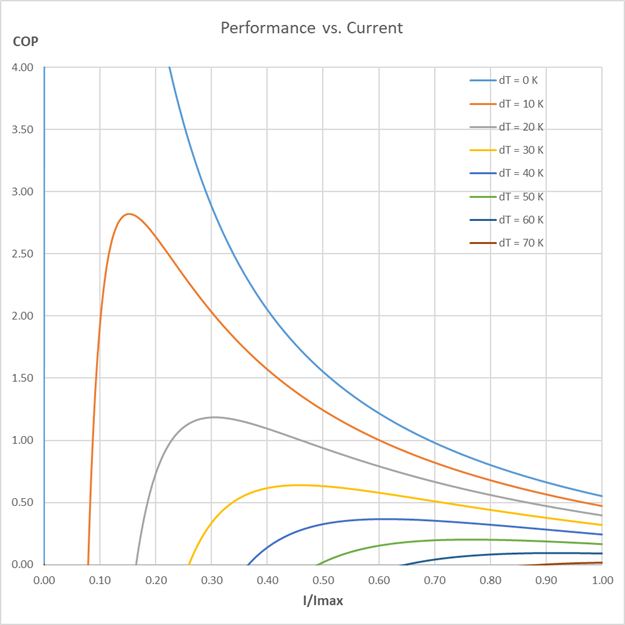I'm afraid I can't answer most of this, as I don't work with TECs. But I'll mention one thing I learned about them, which came as a bit of a surprise to me, and so I always remembered it:
In general, the lower the current you run a TEC at, the more efficient it becomes. Here's a fairly generic chart, typical of most TECs:

Outside temperature of 35°C vs inside temperature of 5°C means dT=30°C, so look at the orange line. 1 on the horizontal axis is 100% of the TEC's maximum rated current. Notice that if you run it at 50% of the rated current, efficiency doubles!
But that doesn't mean it produces as much cooling as a TEC run at 100% current. To run it at 50% rated current, you need to reduce the voltage by half. Power = voltage times current, so at 50% current, you'll actually be running the TEC at 25% power, producing 50% as much cooling due to the efficiency increase, compared to the TEC run at 100%.
A common way to do this is to take two TECs rated for maximum power at 12V, put them in serial, and drive them with 12V. Each gets half as much voltage, and due to the serial resistances, each gets half as much current. In the end, you get as much cooling as you would from a single TEC running at 100%, but using half as much power. Or put three in series and drive from 12V, you get the same cooling, but using a little more than a third of the power. That might even make [TheElectricChicken] happy.

So there is a good reason to use multiple TECs, but not for redundancy's sake.
And don't downsize the TECs while doing this. Smaller TECs = less rated current, putting you back on the ugly parts of the efficiency curve. Use TECs sized so that any one could bear the normal cooling load alone, at 100% current.